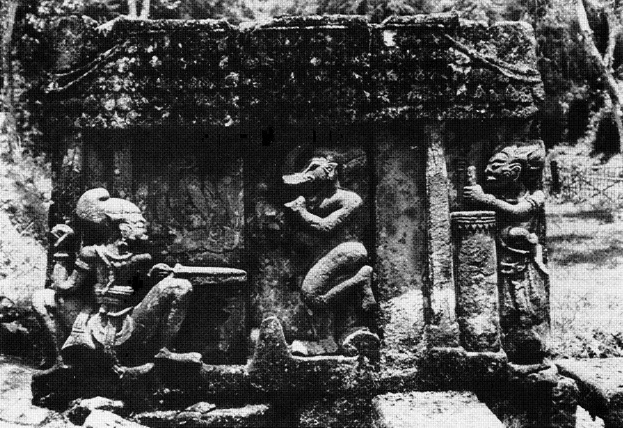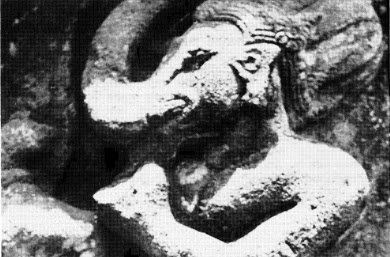Mirror: http://tinyurl.com/oxltn22
Yupa mēḍhā ‘stake’ Indus Script hieroglyph on sculptures, on coins of ancient Indian mints signifies smelting of mẽṛhẽt, meḍ'iron'
मेधा = धन Naigh. ii , 10. pl. products of intelligence , thoughts , opinions) RV mēdhḥ मेधः An offering, oblation. Thus, mēḍhā 'stake' is central to the process of yajna and creation of धन dhana, 'wealth'. (See depiction of dwarfs on Bhutesvar sculptural friezes to signify kharva, karba). Hieroglyph: खर्व (-र्ब) a. [खर्व्-अच्] 1 Mutilated, crippled, imperfect; Yv. Ts.2.5.1.7.-2 Dwarfish, low, short in stature. Rebus: karba 'iron' = kharva 'a treasure, nidhi of Kubera'.
The yupa hieroglyph on railed platform on scultptures and coins of ancient mints is a significant semantic indicator of smelting processes in metalwork. The skambha described in Atharvaveda (X.7) and in Rigveda ricas signyfying a vedic yajna process is mirrored as yupa in fire-altars of Sarasvati-Sindhu civilization. A variant orthographic form of octagonal vajra hints at the purpose signified by the Skambha as vajrasanghAta, 'an adamantine glue' in the transmutation processes converting dhAtu 'mineral ores' into 'metal, hard alloys'. This purpose is demonstrated on sculptural friezes of Mathura and Bhutesvar. वज्र--संघात [p= 914,1] m. N. of a kind of hard cement (Varahamihira's Brihatsamhita) mfn. having the hardness or compactness of adamant (said of भीम) MBh. i , 4775
Figures 1 to 10 are examples of the continuity of use of Indus Script hieroglyphs to signify metalwork by Bharatam Janam, 'metalcaster folk'.
Fig. 4 Ujjain coin hieroglyphs are deciphered. kanda 'fire-altar' for poLa 'magnetite ore' and mẽṛhẽt, meḍ'iron' सं-घट [p= 1130,1] mf(आ)n. heaped , piled up AgP.
 The coin hieroglyphs signify iron ore smelting in a mint.
The coin hieroglyphs signify iron ore smelting in a mint. Dotted circle is a cross-section of a strand of rope: S. dhāī f. ʻ wisp of fibres added from time to time to a rope that is being twisted ʼ, L. dhāī˜ f. Rebus: dhāˊtu n. ʻsubstance ʼ RV., m. ʻ element ʼ MBh., ʻ metal, mineral, ore (esp. of a red colour)ʼ; dhāū, dhāv m.f. ʻ a partic. soft red stone ʼ(Marathi) धवड (p. 436) [ dhavaḍa ] m (Or धावड ) A class or an individual of it. They are smelters of iron (Marathi) gaNDa 'four' (DEDR 1215) Rebus: kanda 'fire-altar'. Thus, the Ujjain hieroglyph of four joined dotted circles signifies a fire-altar for mineral ore. poLa 'zebu' Rebus: poLa 'magnetite ore' sangaDa 'lathe, portabe furnace' Rebus: sanghAta 'adamantine glue', sangara 'proclamation'; mēḍhā m A stake, esp. as forked. Rebus: mẽṛhẽt, meḍ 'iron' (Munda.Ho.) med 'copper' (Slavic languages)

Octagonal yupa brick found in the fire-altar, Binjor. Discovered together with an Indus Script seal which signified metalwork. http://bharatkalyan97.blogspot.in/2015/12/binjor-fire-altar-with-octagonal-yasti.html

 See: http://bharatkalyan97.blogspot.in/2015/05/rigveda-soma-not-herb-not-drink-but.html A tree associated with smelter and linga from Bhuteshwar, Mathura Museum. Architectural fragment with relief showing winged dwarfs (or gaNa) worshipping with flower garlands, Siva Linga. Bhuteshwar, ca. 2nd cent BCE. Lingam is on a platform with wall under a pipal tree encircled by railing. (Srivastava, AK, 1999, Catalogue of Saiva sculptures in Government Museum, Mathura: 47, GMM 52.3625) The tree is a phonetic determinant of the smelter indicated by the railing around the linga: kuṭa, °ṭi -- , °ṭha -- 3, °ṭhi -- m. ʻ tree ʼ Rebus: kuṭhi 'smelter'. kuṭa, °ṭi -- , °ṭha -- 3, °ṭhi -- m. ʻ tree ʼ lex., °ṭaka -- m. ʻ a kind of tree ʼ Kauś.Pk. kuḍa -- m. ʻ tree ʼ; Paš. lauṛ. kuṛāˊ ʻ tree ʼ, dar. kaṛék ʻ tree, oak ʼ ~ Par. kōṛ ʻ stick ʼ IIFL iii 3, 98. (CDIAL 3228). See:
See: http://bharatkalyan97.blogspot.in/2015/05/rigveda-soma-not-herb-not-drink-but.html A tree associated with smelter and linga from Bhuteshwar, Mathura Museum. Architectural fragment with relief showing winged dwarfs (or gaNa) worshipping with flower garlands, Siva Linga. Bhuteshwar, ca. 2nd cent BCE. Lingam is on a platform with wall under a pipal tree encircled by railing. (Srivastava, AK, 1999, Catalogue of Saiva sculptures in Government Museum, Mathura: 47, GMM 52.3625) The tree is a phonetic determinant of the smelter indicated by the railing around the linga: kuṭa, °ṭi -- , °ṭha -- 3, °ṭhi -- m. ʻ tree ʼ Rebus: kuṭhi 'smelter'. kuṭa, °ṭi -- , °ṭha -- 3, °ṭhi -- m. ʻ tree ʼ lex., °ṭaka -- m. ʻ a kind of tree ʼ Kauś.Pk. kuḍa -- m. ʻ tree ʼ; Paš. lauṛ. kuṛāˊ ʻ tree ʼ, dar. kaṛék ʻ tree, oak ʼ ~ Par. kōṛ ʻ stick ʼ IIFL iii 3, 98. (CDIAL 3228). See: 
Worship of linga, of fire by Gandharva, Shunga period (ca. 2nd cent. BCE), ACCN 3625, Mathura Museum. Worship signified by dwarfs, Gaṇa (hence Gaṇeśa = Gaṇa + īśa).
 Relief with Ekamukha linga. Mathura. 1st cent. CE (Fig. 6.2). This is the most emphatic representation of linga as a pillar of fire. The pillar is embedded within a brick-kiln with an angular roof and is ligatured to a tree. Hieroglyph: kuTi 'tree' rebus: kuThi 'smelter'. In this composition, the artists is depicting the smelter used for smelting to create mũh 'face' (Hindi) rebus: mũhe 'ingot' (Santali) of mēḍha 'stake' rebus: meḍ 'iron, metal' (Ho. Munda). मेड (p. 662) [ mēḍa ] f (Usually
Relief with Ekamukha linga. Mathura. 1st cent. CE (Fig. 6.2). This is the most emphatic representation of linga as a pillar of fire. The pillar is embedded within a brick-kiln with an angular roof and is ligatured to a tree. Hieroglyph: kuTi 'tree' rebus: kuThi 'smelter'. In this composition, the artists is depicting the smelter used for smelting to create mũh 'face' (Hindi) rebus: mũhe 'ingot' (Santali) of mēḍha 'stake' rebus: meḍ 'iron, metal' (Ho. Munda). मेड (p. 662) [ mēḍa ] f (Usually मेंढा [ mēṇḍhā ] A crook or curved end rebus: meḍ 'iron, metal' (Ho. Munda)
The association of dwarfs, gaNa is consistent with the interpretation of Ganesa iconography with elephant trunk: karibha 'elephant trunk' (Pali) rebua: karba 'iron' (Tulu); ib 'iron' (Santali) kara 'trunk' khAr 'blacksmith'. Siva's gaNa are Bharatam Janam, metalcaster folk engaged with पोतृ pōtṟ 'purifier priest' to signify dhā̆vaḍ, dhamaga 'smelter, blacksmith' working in alloy of three mineral ores. The garland depicted on Bhutesvar sculptural friezes signifies: dhAman 'garland, rope' rebus: dhamaga 'blacksmith', dhmAtr 'smelter'.
Candi Sukuh and Candi Ceto narratives are a cultural continuum of the veneration of Skambha, the fiery pillar of light as a metaphor for the cosmic dance of dissolution and regeneration. The message of the narratives of Indus Script hieroglyphs and of Candi Sukuh/Candi Ceto are the same: liberation of the Atman as the Cosmic Dancer renders in rhythm and dance the Cosmic phenomena finding expression in kole.l 'smithy' i.e. kole.l 'temple'.

Malwa, clay sealing
Weight: 4.48 gm., Dimensions: 20x15 mm.
Railed yupa (sacrificial post) with side decorations and
Railed yupa (sacrificial post) with side decorations and
a Brahmi legend below reading khadasa
Reference: Pieper collection
Reference: Pieper collection
Thanks to Shailendra Bhandare for the correct reading. According to Bhandare the legend refers to the worship of Skanda; similar objects pertaining to the Skanda cult have been reported from regions of Malwa, Vidarbha and the Deccan.
| Ashvamedha (horse sacrifice) type | |
| Samudragupta, gold dinar, c. 335-375 CE Weight: 7.46 gm, Diameter: 21 mm. Sacrificial horse standing left, yupa (sacrificial post) before, circular Brāhmī legend around and si (for siddham) below horse / Queen standing left, holding towel in left hand, flywhisk in right over her shoulder needle before, Brāhmī legend at right: Ashvamedhaparākrama | |
 | The Ashvamedha type of Samudragupta is arguably the most beautiful Gupta coin. |
| Samudragupta, gold dinar, c. 335-375 CE Weight: 7.37 gm, Diameter: 23 mm. Sacrificial horse standing left, yupa (sacrificial post) before, circular Brāhmī legend around and si (for siddham) below horse / Queen standing left, holding towel in left hand, flywhisk in right over her shoulder needle before, Brāhmī legend at right: Hayamedhaparākrama | |
 | A unique coin in which the reverse legend reads Hayamedhaparākrama instead of the usualAshvamedhaparākrama. Haya is another Sanskrit word that means "horse." |
Fig. 4 Ujjain coin

Ujjain, anonymous AE 1/6 karshapana, bull type
Weight: 1.37 gm., Diameter: 11x10 mm.
Obv.: Bull to right with Indradhvaja above; railed yupa (sacrifical post)
on right.
Rev.: Double-orbed Ujjain symbol.
Reference: Pieper 333
http://coinindia.com/galleries-ujjain3.html
Fig. 5 Kuninda coin
https://www.academia.edu/6146020/2014_JONS_218_-_A_COMPREHENSIVE_CATALOG_AND_CLASSIFICATION_OF_THE_SILVER_COINS_OF_THE_KUNINDA_DYNASTY_with_edits_02_21_2014![]() Kuninda coin See: http://bharatkalyan97.blogspot.in/2015/05/simorg.html?view=magazine.
Kuninda coin See: http://bharatkalyan97.blogspot.in/2015/05/simorg.html?view=magazine.
Silver coin of the Kuninda Kingdom, c. 1st century BCE.
![]() "Lakshmi standing on a makara (elephant headed fish) to the left, holding long stemmed lotus in left hand, her right hand extended to her side, Samudragupta, gold dinar, Ca.355-380, The Skanhe Collection, ACSAA."
"Lakshmi standing on a makara (elephant headed fish) to the left, holding long stemmed lotus in left hand, her right hand extended to her side, Samudragupta, gold dinar, Ca.355-380, The Skanhe Collection, ACSAA."
Fig. 7 Lakshmi Kumaragupta gold dinar
Weight: 1.37 gm., Diameter: 11x10 mm.
Obv.: Bull to right with Indradhvaja above; railed yupa (sacrifical post)
on right.
Rev.: Double-orbed Ujjain symbol.
Reference: Pieper 333
Fig. 5 Kuninda coin
A hieroglyph under the deer reinforces the message from the Kuninda mint.
ḍã̄g mountain-ridge (Hindi) dhangar 'blacksmith'. miṇḍāl 'markhor' (Tōrwālī) meḍho a ram rebus: mẽṛhẽt, meḍ 'iron' (Munda.Ho.) med 'copper' (Slavic languages)
https://www.academia.edu/6146020/2014_JONS_218_-_A_COMPREHENSIVE_CATALOG_AND_CLASSIFICATION_OF_THE_SILVER_COINS_OF_THE_KUNINDA_DYNASTY_with_edits_02_21_2014
 Kuninda coin See: http://bharatkalyan97.blogspot.in/2015/05/simorg.html?view=magazine.
Kuninda coin See: http://bharatkalyan97.blogspot.in/2015/05/simorg.html?view=magazine.Silver coin of the Kuninda Kingdom, c. 1st century BCE.
Obv: Deer standing right, crowned by two cobras, attended by Lakshmi holding a lotus flower. Legend in Prakrit (Brahmi script, from left to right): Rajnah Kunindasya Amoghabhutisya maharajasya ("Great King Amoghabhuti, of the Kunindas").
Rev: Stupa surmounted by the Buddhist symbol triratna, and surrounded by a swastika, a "Y" symbol, and a tree in railing. Legend in Kharoshti script, from righ to left: Rana Kunidasa Amoghabhutisa Maharajasa, ("Great King Amoghabhuti, of the Kunindas"). NB: Note the svastika, tree and mountain glyphs; these are Indus script hieroglyphs on the coin, attesting to the survival of the writing system in metallurgical contexts -- in this case, in the context of a mint. Note on Kuninda.
IGNCA Newsletter, 2003 Vol. III (May - June)
Fig. 6 Lakshmi Samudragupta gold dinar
 "Lakshmi standing on a makara (elephant headed fish) to the left, holding long stemmed lotus in left hand, her right hand extended to her side, Samudragupta, gold dinar, Ca.355-380, The Skanhe Collection, ACSAA."
"Lakshmi standing on a makara (elephant headed fish) to the left, holding long stemmed lotus in left hand, her right hand extended to her side, Samudragupta, gold dinar, Ca.355-380, The Skanhe Collection, ACSAA." Fig. 7 Lakshmi Kumaragupta gold dinar

Lakshmi standing on crocodile, head turned right, hoding long stemmed lotus in left hand and feeding fruit to a peacock with her right, Kumargupta I, gold dinar, Ca.414-455, The Skanda Collection, ACSAA
http://ignca.nic.in/asp/showbig.asp?projid=ac28
Figure 8. Khandagiri hieroglyphs Khandagiri caves (2nd cent. BCE) Cave 3 (Jaina Ananta gumpha). Fire-altar?, śrivatsa, svastika

Khandagiri caves (2nd cent. BCE) Cave 3 (Jaina Ananta gumpha). Fire-altar?, śrivatsa, svastika (hieroglyphs) (King Kharavela, a Jaina who ruled Kalinga has an inscription dated 161 BCE) contemporaneous with Bharhut and Sanchi and early Bodhgaya.
Figure 9. Homage tablet Kankali Tila Tablet of Homage carved with a Svastika, Mathura, from the JainaKankali Tila at Mathura. About 1st century A.D. now preserved in Lucknow Museum.

uddhist, Brahmanical and Jain faiths all thrived at Mathura, and we find deities and motifs from all three and others represented in sculpture. In reference to this photograph in the list of photographic negatives, Bloch wrote that, "The technical name of such a panel was ayagapata [homage panel]." The figure in the centre is described as a Tirthamkara, a Jain prophet." http://www.cristoraul.com/ENGLISH/readinghall/UniversalHistory/INDIA/Cambridge/I/CHAPTER_XXVI.html
Figure 10. Tree on platform![clip_image003]() Tree shown on a tablet from Harappa.
Tree shown on a tablet from Harappa.![]() [Pl. 39, Savita Sharma, opcit. Tree symbol (often on a platform) on punch-marked coins; a symbol recurring on many tablets showing Sarasvati hieroglyphs].
[Pl. 39, Savita Sharma, opcit. Tree symbol (often on a platform) on punch-marked coins; a symbol recurring on many tablets showing Sarasvati hieroglyphs].![]()
Figure 11. Astamngalaka haara including Forked stake as one of 8 hieroglyphs![]() aṣṭamangalaka hāra
aṣṭamangalaka hāra
aṣṭamangalaka hāra depicted on a pillar of a gateway(toran.a) at the stupa of Sanchi, Central India, 1st century BCE. [After VS Agrawala, 1969, Thedeeds of Harsha (being a cultural study of Bāṇa’s Harṣacarita, ed. By PK Agrawala, Varanasi:fig. 62] The hāra or necklace shows a pair of fish signs together with a number of motifsindicating weapons (cakra, paraśu,an:kuśa), including a device that parallels the standard device normally shown in many inscribed objects of SSVC in front of the one-horned bull. •![]()
W. Theobald, 1890, Notes on some of the symbols found on the punch-marked coins of Hindustan, and on their relationship to the archaic symbolism of other races and distant lands, Journal of the Asiatic Society of Bengal, Bombay Branch (JASB), Part 1. History , Literature etc., Nos. III & IV, 1890, pp. 181 to 268, Plates VIII to XI
W. Theobald, 1901, A revision of the symbols on the ‘Karshapana’ Coinage, described in Vol. LIX, JASB, 1890, Part I, No. 3, and Descriptions of many additional symbols, Journal of the Asiatic Society of Bengal, Bombay Branch (JASB), No. 2, 1901 (Read December, 1899).
The 'symbols' which are a continuum from Indus script hieroglyphs all of which relate to metalwork are:
Meluhha glosses read rebus related to metalwork for these Indus script hieroglyphs are detailed in the book, Indus Script -- Meluhha metalwork hieroglyphs (2014).See the hieroglyph of a fishtail PLUS two molluscs tied together with a dhAman 'rope' which signifies dhamaga 'blacksmith'. The word is also related to the gloss dhamma 'dharma' propounded by Jaina Tirthankara who is adored, venerated on the āyāgapaṭṭa.![FIG. 20. ANCIENT INDIAN COIN. (Archæological Survey of India, vol. x., pl. ii., fig. 8.)]()
![]()
![]() āyāgapaṭṭa, Mathura.
āyāgapaṭṭa, Mathura.
This is not an isolated, anecdotal evidence. The cultural continuum is also seen in the continued use of Indus Script hieroglyphs during the historical periods on punch-marked coins.
Indus Script hieroglyphs on Kuninda coin: svastika, tree, mountain-range, portable furnace, markhor, woman, flowing water
Meluhha rebus readings:
sattva 'svastika glyhph' Rebus: jasta 'zinc'
Dm. mraṅ m. ‘markhor’ Wkh. merg f. ‘ibex’ (CDIAL 9885) Tor. miṇḍ ‘ram’, miṇḍā́l ‘markhor’ (CDIAL 10310) Rebus: meḍ (Ho.); mẽṛhet ‘iron’ (Munda.Ho.)
Hieroglyphs: mountain-range, leaflesss tree: ḍã̄g mountain-ridge (H.)(CDIAL 5476). Rebus: dhangar ‘blacksmith’ (Maithili) ढांक [ ḍhāṅka ] n ढांकळ f C An old and decaying tree: also the stump or naked stalks and stem remaining (of a little plant).(Marathi) WPah.kṭg. ḍāṅg f. (obl. -- a) ʻ stick ʼ, ḍaṅgṛɔ m. ʻ stalk (of a plant) ʼ Rebus: ḍhangar blacksmith’ kolom ‘three’ Rebus: kolami ‘smithy, forge’ Vikalpa: khōṇḍa A tree of which the head and branches are broken off, a stock or stump: also the lower portion of the trunk—that below the branches. (Marathi) Rebus 1: kõdā 'to turn in a lathe' (Bengali) Rebus 2: koḍ 'workshop' (Gujarati)
![]() āyāgapaṭṭa, Kankali Tila.Tablet of Homage carved with a Svastika, Mathura, from the JainaKankali Tila at Mathura. About 1st century A.D. now preserved in Lucknow Museum.
āyāgapaṭṭa, Kankali Tila.Tablet of Homage carved with a Svastika, Mathura, from the JainaKankali Tila at Mathura. About 1st century A.D. now preserved in Lucknow Museum.
One hieroglyph is seen on Kuninda coin and also on Jaina āyāgapaṭṭa of Kankali Tila. The hieroglyph is:
![]()
![]() Two views: 1.As on the sculptural frieze. 2. Inverted. kanga 'brazier' on Jaina āyāgapaṭṭa of Kankali Tila.
Two views: 1.As on the sculptural frieze. 2. Inverted. kanga 'brazier' on Jaina āyāgapaṭṭa of Kankali Tila.
This hieroglyph is a variant of the kanga 'brazier' shown as a hieroglyph-component of the hieroglyph-multiplex seen as 'standard device' combined lathe PLUS portable furnace or brazier:
sangada 'lathe', 'portable furnace' G. sãghāṛɔ m. ʻlathe’ ; sã̄gāḍā m. ʻ frame of a building ʼ, °ḍī f. ʻ lathe ʼ(CDIAL 12859) Rebus 1: sangara 'proclamation' Rebus 2:sangataras. संगतराश lit. ‘to collect stones, stone-cutter, mason.’ संगतराश संज्ञा पुं० [फ़ा०] पत्थर काटने या गढ़नेवाला मजदूर । पत्थरकट । २. एक औजार जो पत्थर काटने के काम में आता है । (Dasa, Syamasundara. Hindi sabdasagara. Navina samskarana. 2nd ed. Kasi : Nagari Pracarini Sabha, 1965-1975.) पत्थर या लकडी पर नकाशी करनेवाला, संगतराश, ‘mason’.
Khandagiri caves are also adorned with brazier, śrivatsa, svastika hieroglyphs: (Note: śrivatsa hieroglyph-multiplex may be a variant of the ![]() deciphered in: http://bharatkalyan97.blogspot.in/2015/11/ornamental-endless-knot-svastika-other.html
deciphered in: http://bharatkalyan97.blogspot.in/2015/11/ornamental-endless-knot-svastika-other.html
S. KalyanaramanSarasvati Research CenterDecember 21, 2015
uddhist, Brahmanical and Jain faiths all thrived at Mathura, and we find deities and motifs from all three and others represented in sculpture. In reference to this photograph in the list of photographic negatives, Bloch wrote that, "The technical name of such a panel was ayagapata [homage panel]." The figure in the centre is described as a Tirthamkara, a Jain prophet." http://www.cristoraul.com/ENGLISH/readinghall/UniversalHistory/INDIA/Cambridge/I/CHAPTER_XXVI.html
Figure 10. Tree on platform
 Tree shown on a tablet from Harappa.
Tree shown on a tablet from Harappa.
[Pl. 39, Savita Sharma, opcit. Tree symbol (often on a platform) on punch-marked coins; a symbol recurring on many tablets showing Sarasvati hieroglyphs].

Figure 11. Astamngalaka haara including Forked stake as one of 8 hieroglyphs

aṣṭamangalaka hāra
aṣṭamangalaka hāra depicted on a pillar of a gateway(toran.a) at the stupa of Sanchi, Central India, 1st century BCE. [After VS Agrawala, 1969, Thedeeds of Harsha (being a cultural study of Bāṇa’s Harṣacarita, ed. By PK Agrawala, Varanasi:fig. 62] The hāra or necklace shows a pair of fish signs together with a number of motifsindicating weapons (cakra, paraśu,an:kuśa), including a device that parallels the standard device normally shown in many inscribed objects of SSVC in front of the one-horned bull.
•
(cf. Marshall, J. and Foucher,The Monuments of Sanchi, 3 vols., Callcutta, 1936, repr. 1982, pl. 27).The first necklace has eleven and the second one has thirteen pendants (cf. V.S. Agrawala,1977, Bhāratīya Kalā , Varanasi, p. 169); he notes the eleven pendants as:sun,śukra, padmasara,an:kuśa, vaijayanti, pan:kaja,mīna-mithuna,śrīvatsa, paraśu,
darpaṇa and kamala. "The axe (paraśu) and an:kuśa pendants are common at sites of north India and some oftheir finest specimens from Kausambi are in the collection of Dr. MC Dikshit of Nagpur."(Dhavalikar, M.K., 1965, Sanchi: A cultural Study , Poona, p. 44; loc.cit. Dr.Mohini Verma,1989, Dress and Ornaments in Ancient India: The Maurya and S'un:ga Periods,Varanasi, Indological Book House, p. 125).

W. Theobald, 1890, Notes on some of the symbols found on the punch-marked coins of Hindustan, and on their relationship to the archaic symbolism of other races and distant lands, Journal of the Asiatic Society of Bengal, Bombay Branch (JASB), Part 1. History , Literature etc., Nos. III & IV, 1890, pp. 181 to 268, Plates VIII to XI
W. Theobald, 1901, A revision of the symbols on the ‘Karshapana’ Coinage, described in Vol. LIX, JASB, 1890, Part I, No. 3, and Descriptions of many additional symbols, Journal of the Asiatic Society of Bengal, Bombay Branch (JASB), No. 2, 1901 (Read December, 1899).
The 'symbols' which are a continuum from Indus script hieroglyphs all of which relate to metalwork are:
Meluhha glosses read rebus related to metalwork for these Indus script hieroglyphs are detailed in the book, Indus Script -- Meluhha metalwork hieroglyphs (2014).
See the hieroglyph of a fishtail PLUS two molluscs tied together with a dhAman 'rope' which signifies dhamaga 'blacksmith'. The word is also related to the gloss dhamma 'dharma' propounded by Jaina Tirthankara who is adored, venerated on the āyāgapaṭṭa.
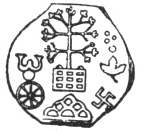
This is not an isolated, anecdotal evidence. The cultural continuum is also seen in the continued use of Indus Script hieroglyphs during the historical periods on punch-marked coins.
Indus Script hieroglyphs on Kuninda coin: svastika, tree, mountain-range, portable furnace, markhor, woman, flowing water
Meluhha rebus readings:
sattva 'svastika glyhph' Rebus: jasta 'zinc'
kuṭi ‘tree’ Rebus: kuṭhi ‘smelter’; kuṭhāru 'tree' Rebus: kuṭhāru 'armourer'
G. sãghāṛɔ m. ʻlathe’ 'portable furnaceRebus: संघाट joinery; M. sãgaḍ ‘double-canoe’ Rebus: sangataras ‘stone-cutter, mason’
Dm. mraṅ m. ‘markhor’ Wkh. merg f. ‘ibex’ (CDIAL 9885) Tor. miṇḍ ‘ram’, miṇḍā́l ‘markhor’ (CDIAL 10310) Rebus: meḍ (Ho.); mẽṛhet ‘iron’ (Munda.Ho.)
kola 'woman' Rebus: kol 'working in iron'; kolhe 'smelter'
kāṇḍa 'water' Rebus: kāṇḍa ‘tools, pots and pans and metal-ware’ Thus, cast bronze metalware.
Hieroglyphs: mountain-range, leaflesss tree: ḍã̄g mountain-ridge (H.)(CDIAL 5476). Rebus: dhangar ‘blacksmith’ (Maithili) ढांक [ ḍhāṅka ] n ढांकळ f C An old and decaying tree: also the stump or naked stalks and stem remaining (of a little plant).(Marathi) WPah.kṭg. ḍāṅg f. (obl. -- a) ʻ stick ʼ, ḍaṅgṛɔ m. ʻ stalk (of a plant) ʼ Rebus: ḍhangar blacksmith’ kolom ‘three’ Rebus: kolami ‘smithy, forge’ Vikalpa: khōṇḍa A tree of which the head and branches are broken off, a stock or stump: also the lower portion of the trunk—that below the branches. (Marathi) Rebus 1: kõdā 'to turn in a lathe' (Bengali) Rebus 2: koḍ 'workshop' (Gujarati)

āyāgapaṭṭa, Kankali Tila.Tablet of Homage carved with a Svastika, Mathura, from the JainaKankali Tila at Mathura. About 1st century A.D. now preserved in Lucknow Museum.
One hieroglyph is seen on Kuninda coin and also on Jaina āyāgapaṭṭa of Kankali Tila. The hieroglyph is:
This hieroglyph is a variant of the kanga 'brazier' shown as a hieroglyph-component of the hieroglyph-multiplex seen as 'standard device' combined lathe PLUS portable furnace or brazier:
sangada 'lathe', 'portable furnace' G. sãghāṛɔ m. ʻlathe’ ; sã̄gāḍā m. ʻ frame of a building ʼ, °ḍī f. ʻ lathe ʼ(CDIAL 12859) Rebus 1: sangara 'proclamation' Rebus 2:sangataras. संगतराश lit. ‘to collect stones, stone-cutter, mason.’ संगतराश संज्ञा पुं० [फ़ा०] पत्थर काटने या गढ़नेवाला मजदूर । पत्थरकट । २. एक औजार जो पत्थर काटने के काम में आता है । (Dasa, Syamasundara. Hindi sabdasagara. Navina samskarana. 2nd ed. Kasi : Nagari Pracarini Sabha, 1965-1975.) पत्थर या लकडी पर नकाशी करनेवाला, संगतराश, ‘mason’.
Khandagiri caves are also adorned with brazier, śrivatsa, svastika hieroglyphs: (Note: śrivatsa hieroglyph-multiplex may be a variant of the ![]() deciphered in: http://bharatkalyan97.blogspot.in/2015/11/ornamental-endless-knot-svastika-other.html
deciphered in: http://bharatkalyan97.blogspot.in/2015/11/ornamental-endless-knot-svastika-other.html
 deciphered in: http://bharatkalyan97.blogspot.in/2015/11/ornamental-endless-knot-svastika-other.html
deciphered in: http://bharatkalyan97.blogspot.in/2015/11/ornamental-endless-knot-svastika-other.htmlS. Kalyanaraman
Sarasvati Research Center
December 21, 2015
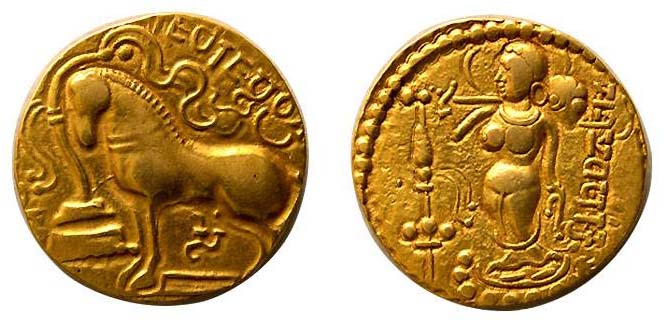

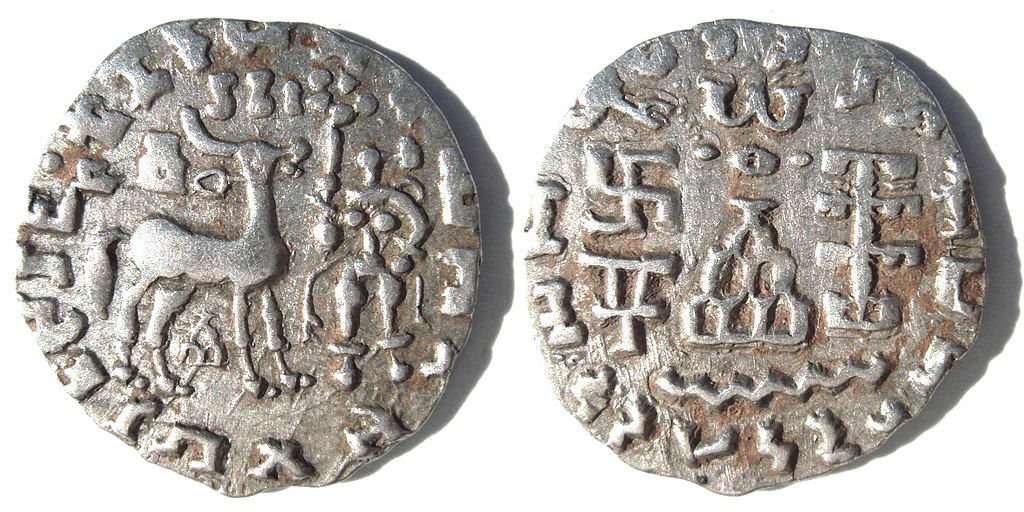


 Kartikeya Tanna
Kartikeya Tanna 


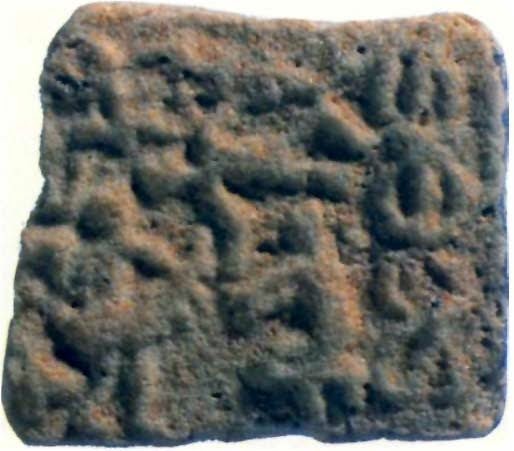
 Drummer m1406 mē
Drummer m1406 mē


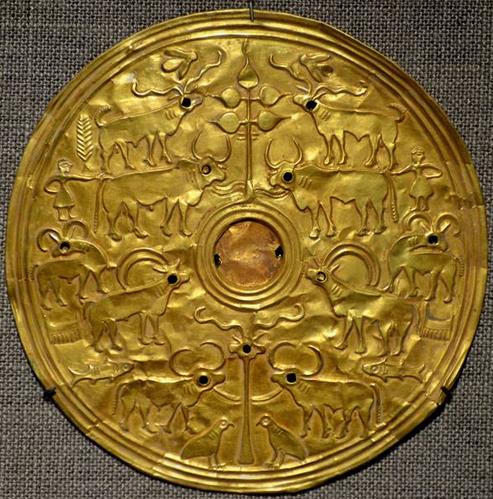















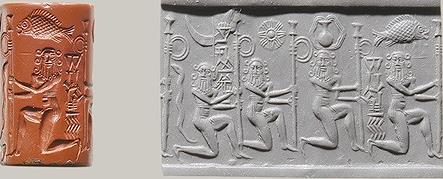 Four standard-bearers with six curls of hair.
Four standard-bearers with six curls of hair. 
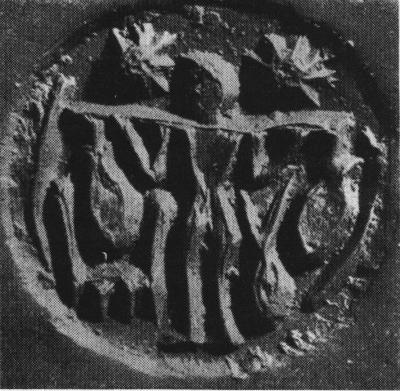









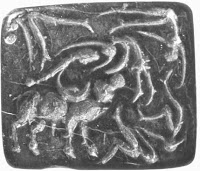


 Ishkaran S. Bhandari
Ishkaran S. Bhandari  Subramanian Swamy
Subramanian Swamy 




 This is the second time that KCR is organizing such a ritual in favour of Telangana; he had organized the same yagna, but on a low key in May 2011, to pray for the early formation of Telangana. (Source: Express Photo)
This is the second time that KCR is organizing such a ritual in favour of Telangana; he had organized the same yagna, but on a low key in May 2011, to pray for the early formation of Telangana. (Source: Express Photo) (Source: Express Photo)
(Source: Express Photo).jpg)


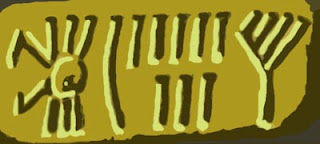 h-155. Crab with six legs
h-155. Crab with six legs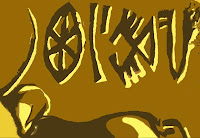

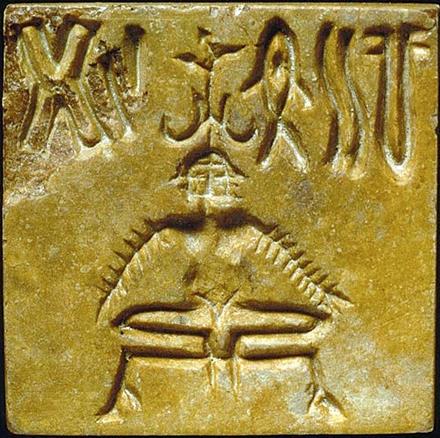








![clip_image062[4]](http://kalyan97.files.wordpress.com/2007/06/clip-image0624-thumb.jpg?w=99&h=45)


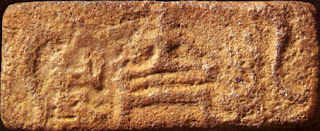























 '
'




